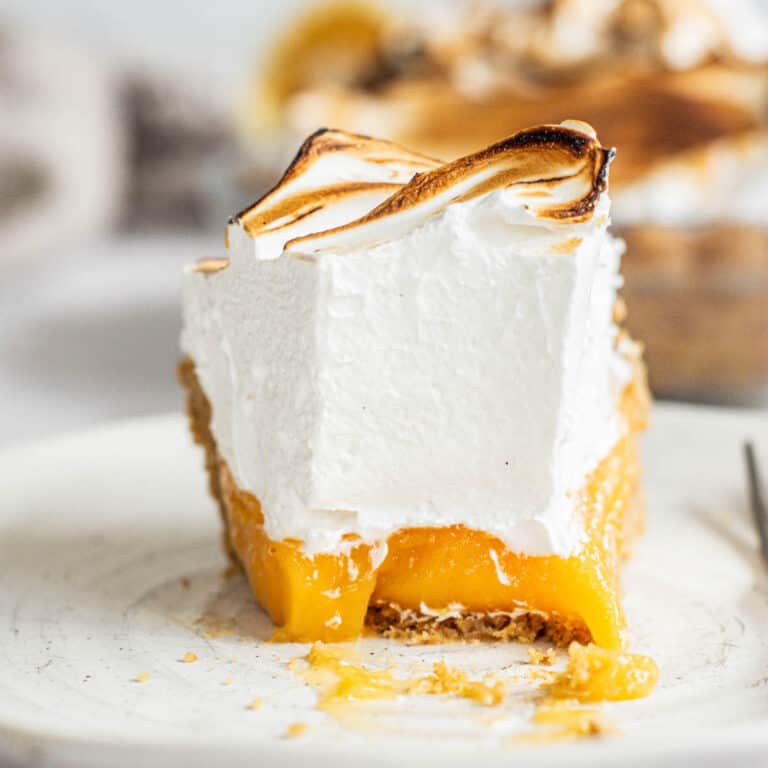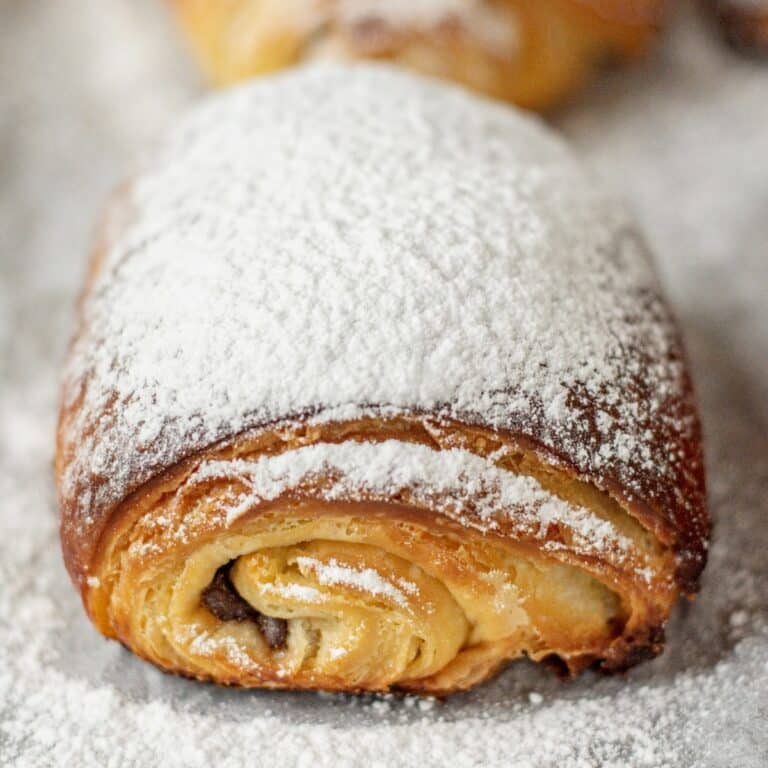Wet Caramel Method – Step by Step
There are two basic methods when it comes to making caramel. This post is looking at a wet caramel. It’s easy to make homemade caramel sauce, perfect to use in so many ways!

Wet and Dry Caramel: The Main Difference
There are two main caramel methods – A dry method and a wet method. The main difference lies in the use of water. In the dry caramel method, sugar is heated alone and stirred with a wooden spoon or heatproof spatula until it melts and caramelizes. This way is nice and fast, but it requires close attention so that it doesn’t burn.
With the wet caramel method, you heat sugar with enough water to form a sugar syrup. This way is slower and easier to manage, and you do it without stirring. Often dry caramel can make a darker caramel than the wet method, one that’s slightly more bitter too. This is because it caramelizes much faster and more unevenly.
The key to a successful caramel is in paying close attention to the sugar as it heats and melts and use a light-colored saucepan to better gauge the color change.

Wet Caramel Ingredients
For this wet caramel sauce recipe, we’ll need the following ingredients:
- White Sugar: This is the backbone of your caramel.
- Water: An essential part of the wet caramel method, it helps the sugar melt evenly and lessens the chance of burning it.
- Heavy Cream: This is used at room temperature to create a smooth sauce from the cooked sugar. Be careful when adding, as the hot caramel will bubble up.
- Unsalted Butter: It lends a creamy, rich texture to the caramel.
- Vanilla Extract: A dash of this enhances the overall flavor.
- Lemon Juice (optional): This keeps the sugar from recrystallizing, causing a grainy caramel. It’s optional but helpful.
Find the ingredient amounts in the recipe card at the bottom of the post.
The Wet Caramel Process: Step by Step
Begin with a mixture of water, sugar, and lemon juice in a medium saucepan, placed on low heat. Stir gently until the sugar dissolves.


Let the mixture boil until it begins to change color and caramelize. You can occasionally place a lid on the saucepan, creating condensation that will push down any sugar crystals forming on the side. As the water evaporates, your sugar will take on a caramel hue. You can gently swirl the pan every so often to ensure even cooking.

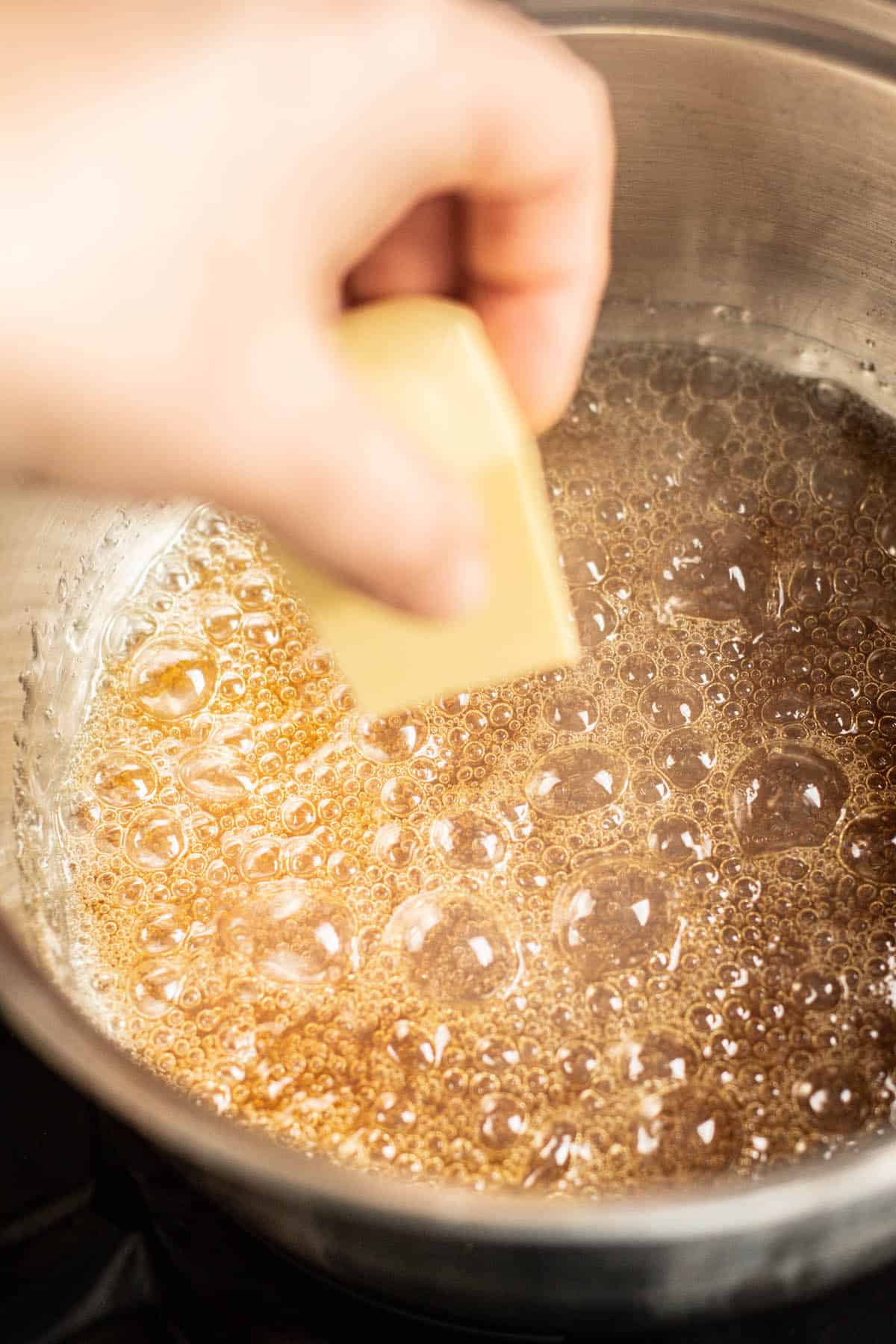
Whisk in the butter cubes once the caramel has reached a deep amber color or your desired color. You don’t want it too light or it won’t have flavor, nor too dark or it’ll be bitter.
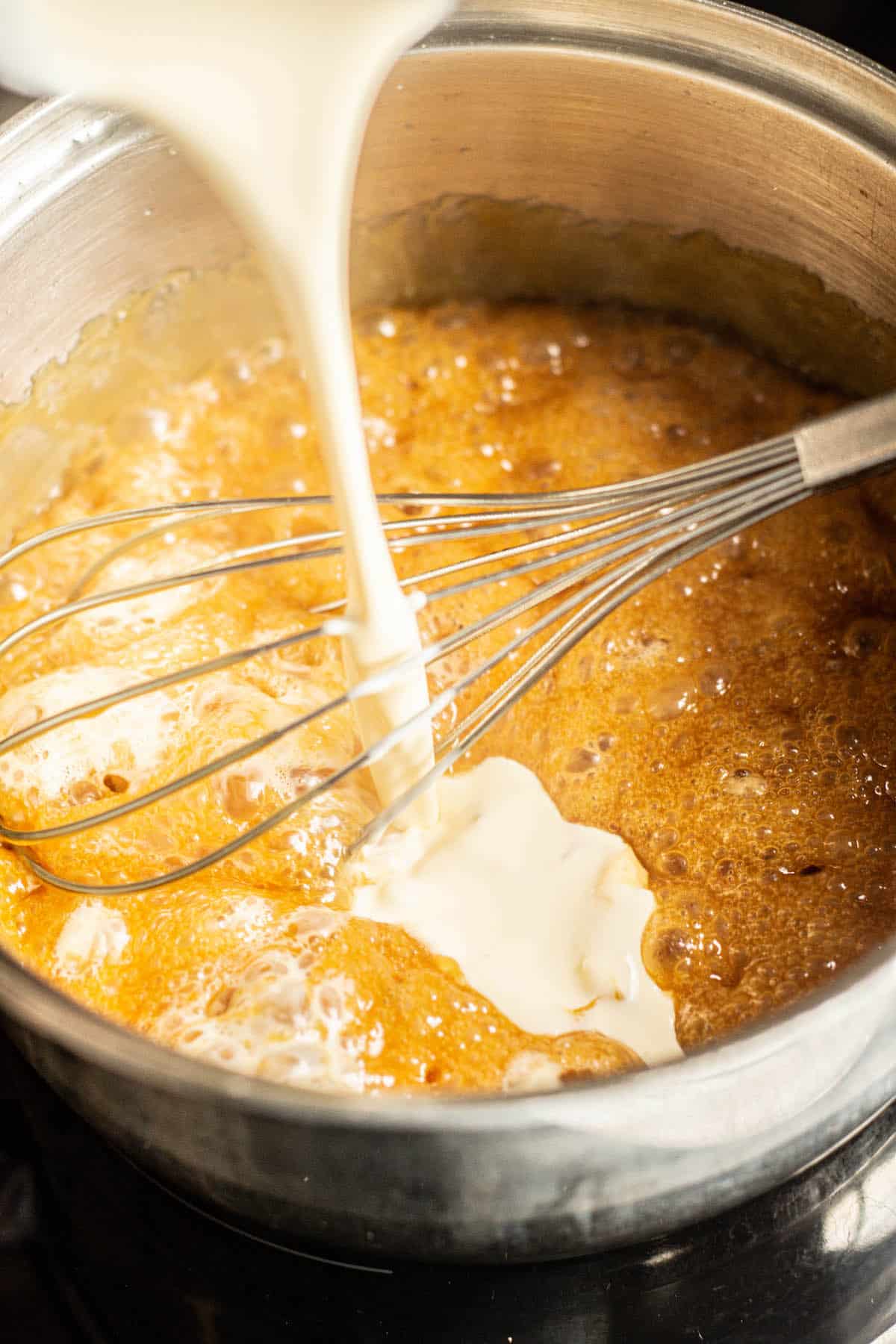

Next, whisk in the heavy cream. The mixture will bubble rapidly and rise, so take care. Take it off the heat and stir through salt and vanilla.
Leftover caramel can be stored in the refrigerator in an airtight container for up to a month.
Uses for caramel sauce
- Drizzled Over Ice Cream: A classic, irresistible combination. Vanilla ice cream and caramel is one of my favorite desserts.
- Cake and Cupcake Topping: Drizzle it over cakes or fill cupcakes for an extra sweet touch.
- Flavoring for Coffee Drinks: Stir some caramel sauce into your latte or iced coffee for a homemade caramel-flavored beverage.
- Add it to milkshakes: Blend caramel sauce into milkshakes for a rich, sweet flavor.
- Topping for Pancakes or Waffles: Swap out your regular syrup for caramel sauce to elevate your breakfast.
- Mixed into Yogurt: Stir some caramel sauce into plain Greek yogurt for a sweet and tangy dessert.
- Dip for Fruit: Use caramel sauce as a dip for apple slices, bananas, or strawberries. I love this whipped caramel for that.
- Filling for Crepes or Pastries: Use it as a filling for sweet crepes or pastries.
- Topping for Puddings or Custards: Drizzle caramel sauce over rice pudding, bread pudding, apple pie or custard for a decadent dessert.
- Cheesecake Topping: Drizzle it over a finished cheesecake.
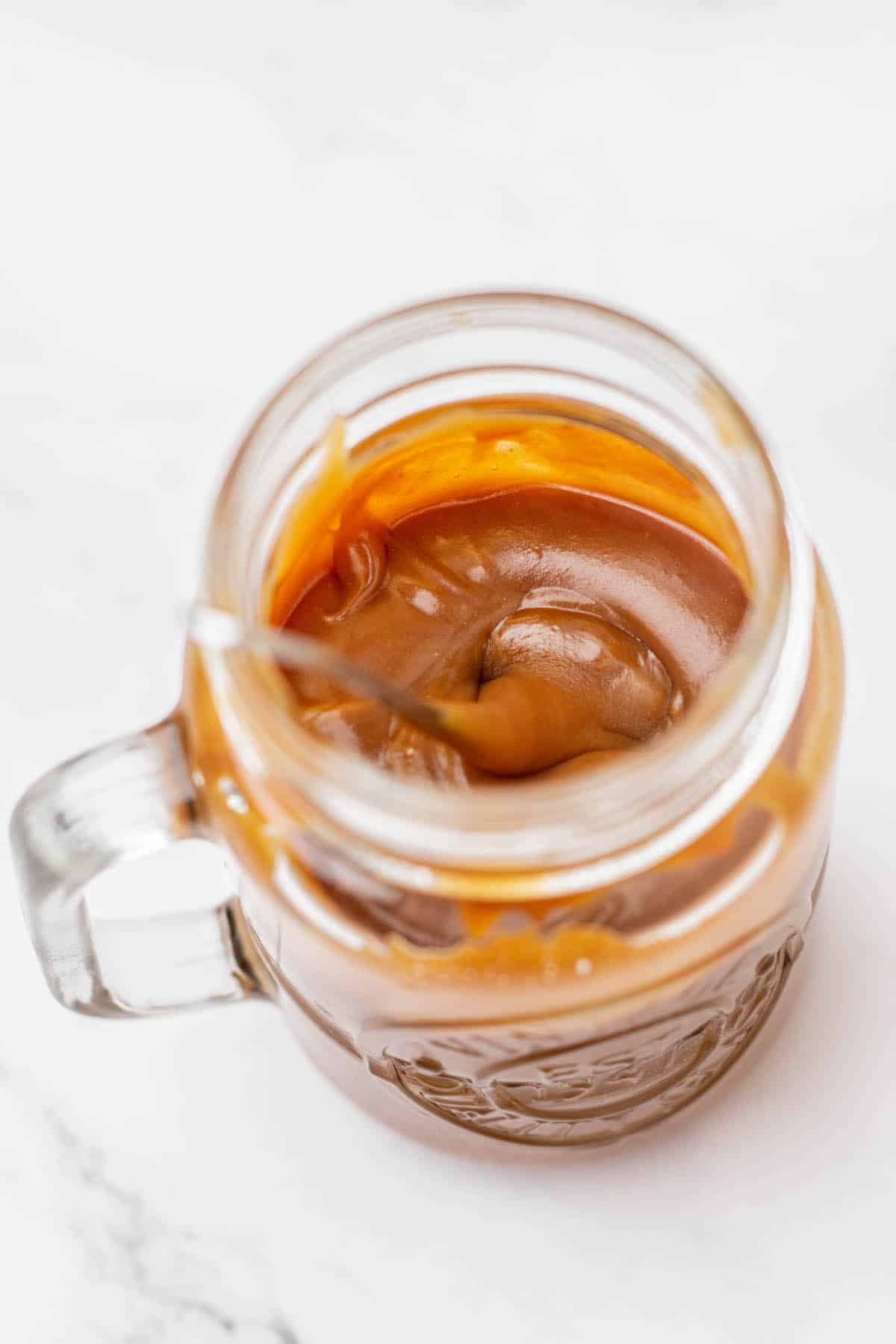
FAQS
With dry caramel, sugar heats by itself until it melts and turns amber-brown. The wet way mixes sugar with water, making syrup, which then cooks and browns. It’s slower but less tricky, and you don’t stir it. Dry caramel usually ends up a bit darker and slightly more bitter because it cooks faster and a bit less evenly.
It’s best not to stir once the sugar has dissolved, as this can lead to crystallization. Instead, you can swirl the pan gently if needed. Or, occasionally place a lid on the saucepan, to create condensation that will push down any sugar crystals forming on the side.
Definitely! You can add flavors like vanilla, rum, coffee, spices and more. These flavors can be added to the cream before it’s added to the caramel.

Wet Caramel Method
Ingredients
- 200 g granulated white sugar
- 60 g water
- 1/2 teaspoon lemon juice optional
- 57 g butter, salted or unsalted room temperature, cut into cubes
- 120 g heavy cream room temperature
- 1/2 teaspoon vanilla extract optional
- 1/4 teaspoon salt
Instructions
- Begin with a mixture of water, sugar, and lemon juice (if using) in a medium saucepan, placed on low heat. Stir gently until the sugar dissolves.
- Once the sugar has dissolved, turn the heat up to medium heat and stop stirring to avoid the unwanted crystallization of the melted sugar. Use a wet pastry brush to brush down any stray sugar crystals stuck to the sides of the pan.
- Let the mixture boil until it begins to change color and caramelize. You can occasionally place a lid on the saucepan, creating condensation that will push down any sugar crystals forming on the side. As the water evaporates, your sugar will take on a caramel hue. You can gently swirl the pan every so often to ensure even cooking.
- Whisk in the butter cubes once the caramel reaches a deep amber or desired color. You don't want it too light, or it won't have flavor, nor too dark, or it'll be bitter.
- Next, whisk in the heavy cream. The mixture will bubble quickly and rise, so please take care. Take it off the heat and stir through salt and vanilla.
- Leftover caramel can be stored in the refrigerator in an airtight container for up to a month.

